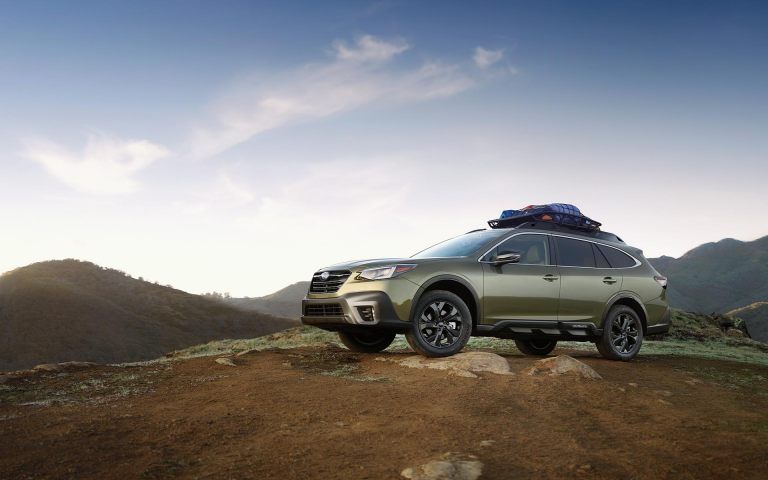
Quick and efficient ways to de-ice your car in Canada
Winter driving can be a tough challenge with icy conditions often putting a wrench in one’s daily commute.Before you can even hit the road, however, the immediate task is often to remove the thick, stubborn layers of ice that cling tenaciously to your vehicle overnight.
Nonetheless, even with the best precautions, there may be times when you’re caught without a shelter and need effective ways to de-ice your vehicle. In this comprehensive guide, we’ll explore several strategies to ensure that your car is ice-free and ready to navigate the wintry roads of Canada.
Preemptive strategies before the frost
If you’re fortunate enough to have a garage or a dedicated winter shelter, make sure to utilize it. Parking undercover can and will save you significant de-icing time in the morning. For those who don’t have access to indoor parking, consider a car cover. While not as protective as a garage, it can still provide a barrier between your vehicle and the elements.
Another preemptive measure is applying a hydrophobic windshield treatment. These treatments repel water, reducing ice accumulation. Likewise, keeping your windshield wipers in the upright position overnight prevents them from freezing to the windshield – a simple yet effective practice.
De-icing essentials and products
Equipping yourself with the appropriate tools is the first step to combating ice. Every driver in frost-prone regions should own a sturdy ice scraper and snow brush. These tools are specifically designed to remove ice without damaging your car’s surface or windows. In a pinch, plastic loyalty cards or CD cases have been used, but these are not recommended as they can easily cause damage.
De-icing sprays, available at most automotive stores, can make the process significantly quicker. These solutions work by lowering the freezing point of water, helping to break the bond between the ice and your car’s surface. However, it’s essential to follow instructions carefully to avoid any unwanted chemical reactions that could harm your vehicle’s paint or windows.
In case you don’t have any de-icing products, you can use warm water. First, start the car and turn on the defroster to warm up the interior. This helps melt ice on the windows from the inside. Be patient, as it may take some time. Then, pour lukewarm water on the windshield to help melt the ice. Make sure the water is not too hot, as sudden temperature changes can crack the glass.
You can also consider buying a heated ice scraper, which is equipped with a heating element to make ice removal more efficient and faster. Some models plug into the car’s power outlet.
The de-icing process
Starting your car and allowing it to warm up can assist in the de-icing process, but it’s crucial to never leave your car unattended while it’s running – this poses a security risk, as well as a health hazard due to potential carbon monoxide build-up in an enclosed space.
Make full use of your defroster and blower settings to circulate warm air over the windows and windshield. Be sure to clear the snow around the exhaust pipe before running your engine to prevent hazardous emissions from becoming trapped and entering the vehicle.
When tackling the ice, start by breaking up the thicker parts with the flat side of your ice scraper, then switch to the clawed edge to chip away at the more stubborn spots. Gently pushing the softened ice with your snow brush can clear it without much effort.
Safety considerations to remember
A common misconception is that pouring hot water on your windshield will quickly melt the ice. This can actually lead to a cracked windshield due to the rapid temperature change. Instead, a lukewarm water mix can help in melting the ice without causing any damage.
Resist the temptation to clear only a small ‘peephole’ to look through. Ensure that all windows, mirrors, and lights are completely cleared for maximum visibility and safety.
De-icing your car might not be the most invigorating of winter activities in Canada, but with these strategies, you can make it quick and efficient. The point is not to let ice impede your travels or to allow the removal process to become so tedious that you cut corners, which can lead to perilous situations on the road. Stay warm, stay safe, and embrace winter fully prepared.
Winter driving can be a tough challenge with icy conditions often putting a wrench in one’s daily commute. Before you can even hit the road, however, the immediate task is often to remove the thick, stubborn layers of ice that cling tenaciously to your vehicle overnight.
Nonetheless, even with the best precautions, there may be times when you’re caught without a shelter and need effective ways to de-ice your vehicle. In this comprehensive guide, we’ll explore several strategies to ensure that your car is ice-free and ready to navigate the wintry roads of Canada.
Preemptive strategies before the frost
If you’re fortunate enough to have a garage or a dedicated winter shelter, make sure to utilize it. Parking undercover can and will save you significant de-icing time in the morning. For those who don’t have access to indoor parking, consider a car cover. While not as protective as a garage, it can still provide a barrier between your vehicle and the elements.
Another preemptive measure is applying a hydrophobic windshield treatment. These treatments repel water, reducing ice accumulation. Likewise, keeping your windshield wipers in the upright position overnight prevents them from freezing to the windshield – a simple yet effective practice.
De-icing essentials and products
Equipping yourself with the appropriate tools is the first step to combating ice. Every driver in frost-prone regions should own a sturdy ice scraper and snow brush. These tools are specifically designed to remove ice without damaging your car’s surface or windows. In a pinch, plastic loyalty cards or CD cases have been used, but these are not recommended as they can easily cause damage.
De-icing sprays, available at most automotive stores, can make the process significantly quicker. These solutions work by lowering the freezing point of water, helping to break the bond between the ice and your car’s surface. However, it’s essential to follow instructions carefully to avoid any unwanted chemical reactions that could harm your vehicle’s paint or windows.
In case you don’t have any de-icing products, you can use warm water. First, start the car and turn on the defroster to warm up the interior. This helps melt ice on the windows from the inside. Be patient, as it may take some time. Then, pour lukewarm water on the windshield to help melt the ice. Make sure the water is not too hot, as sudden temperature changes can crack the glass.
You can also consider buying a heated ice scraper, which is equipped with a heating element to make ice removal more efficient and faster. Some models plug into the car’s power outlet.
The de-icing process
Starting your car and allowing it to warm up can assist in the de-icing process, but it’s crucial to never leave your car unattended while it’s running – this poses a security risk, as well as a health hazard due to potential carbon monoxide build-up in an enclosed space.
Make full use of your defroster and blower settings to circulate warm air over the windows and windshield. Be sure to clear the snow around the exhaust pipe before running your engine to prevent hazardous emissions from becoming trapped and entering the vehicle.
When tackling the ice, start by breaking up the thicker parts with the flat side of your ice scraper, then switch to the clawed edge to chip away at the more stubborn spots. Gently pushing the softened ice with your snow brush can clear it without much effort.
Safety considerations to remember
A common misconception is that pouring hot water on your windshield will quickly melt the ice. This can actually lead to a cracked windshield due to the rapid temperature change. Instead, a lukewarm water mix can help in melting the ice without causing any damage.
Resist the temptation to clear only a small ‘peephole’ to look through. Ensure that all windows, mirrors, and lights are completely cleared for maximum visibility and safety.
De-icing your car might not be the most invigorating of winter activities in Canada, but with these strategies, you can make it quick and efficient. The point is not to let ice impede your travels or to allow the removal process to become so tedious that you cut corners, which can lead to perilous situations on the road. Stay warm, stay safe, and embrace winter fully prepared.







